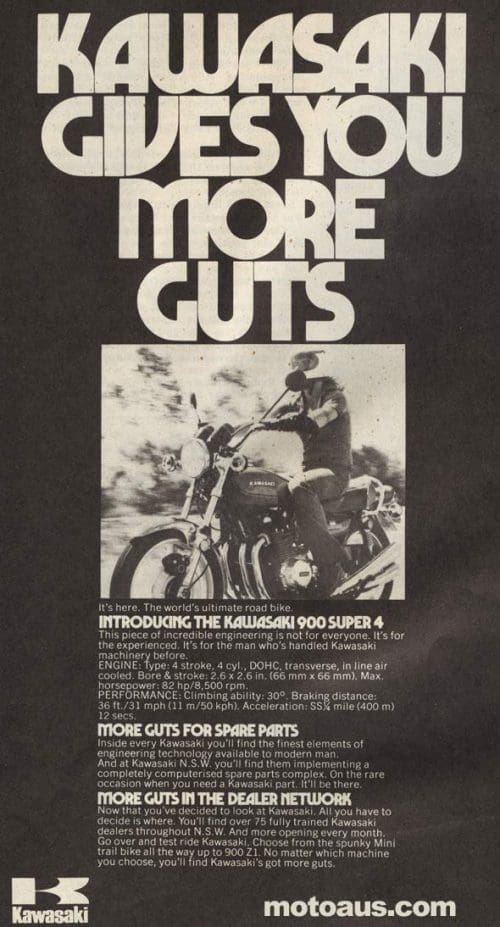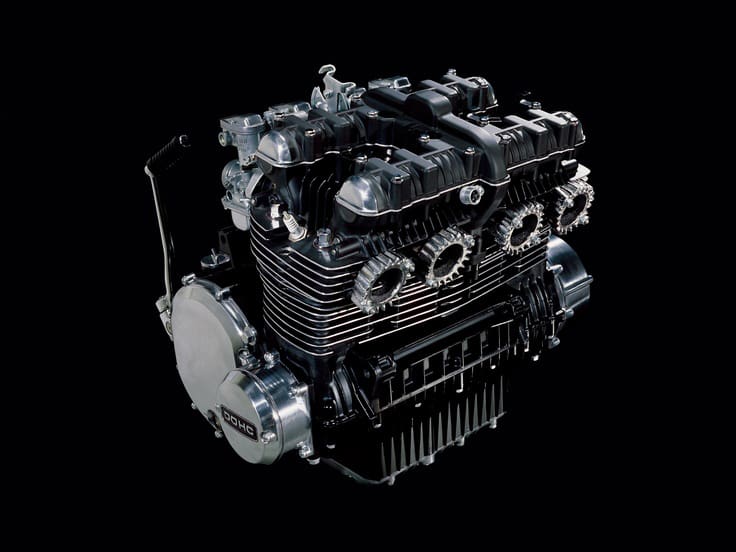In 1968 Honda changed the game forever with its CB750 – but just four years later Kawasaki’s Z1 announced in no uncertain terms that it was game on
Fate is fickle at the best of times but rarely so cruel than it was to Kawasaki in 1968. Poised to launch an all-new 750cc four-cylinder four-stroke machine, it was beaten to the punch by Honda when the CB750 made its debut at the 15th Tokyo Motor Show on 26 October that year.
It was a monumental blow for Kawasaki. While Kawasaki had just debuted its wickedly fast 500cc H1 triple-cylinder two-stroke, the fact that Honda was one step ahead, if not several steps ahead, in multi-cylinder four-stoke development was devastating. Like Honda, Kawasaki was looking towards the booming USA market when its new 750cc four-cylinder four-stroke was conceived. Codenamed N600, Kawasaki had successfully tested prototypes following nearly two years of development. Once final testing was completed that year, production was slated to begin by early 1969.
But the arrival of Honda’s groundbreaking CB750 meant the N600 project was shelved immediately as Kawasaki realised it was pointless to offer a me-too follow-up on the CB750.
Nevertheless, it took until 1970 before Kawasaki decided what to do about the CB750’s challenge and assembled the team it needed to move forward.
Further market research in the USA in 1970 confirmed there was room for a CB750 rival, but it had to be a four-stroke. Regardless of the performance attributes of its two-stroke triples, Kawasaki realised American riders wanted flexible and predictable power and plenty of low-rpm torque, rather than the frantic power rush of something like its 500cc H1 or even the up-coming 750cc H2 two-stroke triple.
American riders, born and bred in the world of large-capacity V8 car engines, also wanted an engine that looked and sounded like what they considered to be a real engine, something that a triple-cylinder two-stroke, never did. What’s more, with the seeds of the green movement already planted in the US and concerns regarding vehicle pollution becoming stronger – especially in all-important Californian market – the future of smoky two-strokes looked bleak.

The Z1’s engine development was led by Ben Inamura who was also in charge of the N600’s engine, and before that, the W1 650cc four-stroke twin, up until that time Kawasaki’s biggest-capacity motorcycle. Just why Kawasaki settled on the
903cc capacity is difficult to say, although being bigger than 900cc meant it could be described as
a litre-class machine.
The 903cc capacity also left plenty of room to grow to a full litre or beyond, something which would come just four years later, but it was still significantly bigger than the 736cc of Honda’s CB750. During its design and development, Kawasaki was obsessed with the Z1’s reliability above everything else. Even after early prototypes had successfully passed testing in 1971, final prototypes were taken to the USA in early 1972 and flogged around the Talladega Superspeedway on wide-open throttles at speeds up to 225km/h by a posse of riders including Kawasaki race team’s Gary Nixon, Paul Smart and Hurley Wilbert.
This punishment was only stopped for as long as it took to replenish the 18-litre fuel tanks. Aside from a healthy appetite for rear tyres and chains, the bikes passed this torture test with flying colours.
When released in late 1972, the Z1 quickly established itself as the new king. In one move, Kawasaki had relegated Honda’s CB750 to yesterday’s motorcycle. Even so, the claim that the Z1 was the world’s first superbike is hard to justify given the Z1 wasn’t significantly different, at least in overall concept, from Honda’s CB750.
But, either way, world’s first superbike or not, the Z1 did say one thing in unequivocal terms and that was: game-on. The horsepower war had been declared…

Engine room
Kawasaki adopted a twin-cam cylinder head for the Z1 as opposed to the single-cam design of Honda’s CB750. The Z1’s cams also acted directly on the valves via shim-adjusted inverted bucket followers, while the Honda used rocker-arm followers with screw and locknut adjustment. The Kawasaki arrangement was more robust than that of the Honda and left more room for tuning. The robust nature of the Z1 extended to the bottom-end – where the Z1 employed a roller-bearing crankshaft instead of a plain-bearing crank as per the CB750. a move that no doubt had much to do with Kawasaki’s expertise with roller-bearing cranks in its two-stroke machinery.

Quick specs
KAWASAKI Z1
Configuration In-line
four-cylinder four-stroke
Cylinder head DOHC, two valves per cylinder
Capacity 903cc
Bore/stroke 66 x 66mm
Compression ratio Not given
Cooling Air
Fueling 4 x 28mm carburettors
Power 60kW @ 8500rpm
Torque 73.5Nm @ 7000rpm
Frame Steel tube, double cradle
Front suspension Telescopic fork
Rear suspension Twin shock
Wheels F: 19-inch R:18-inch
Brakes F: Single disc, single piston caliper R: Single leading shoe drum
Fuel capacity 18L
Dry weight 230kg
Price $2154 (1975, Australia)

TEXT Fraser Stronach PHOTOGRAPHY AMCN archives